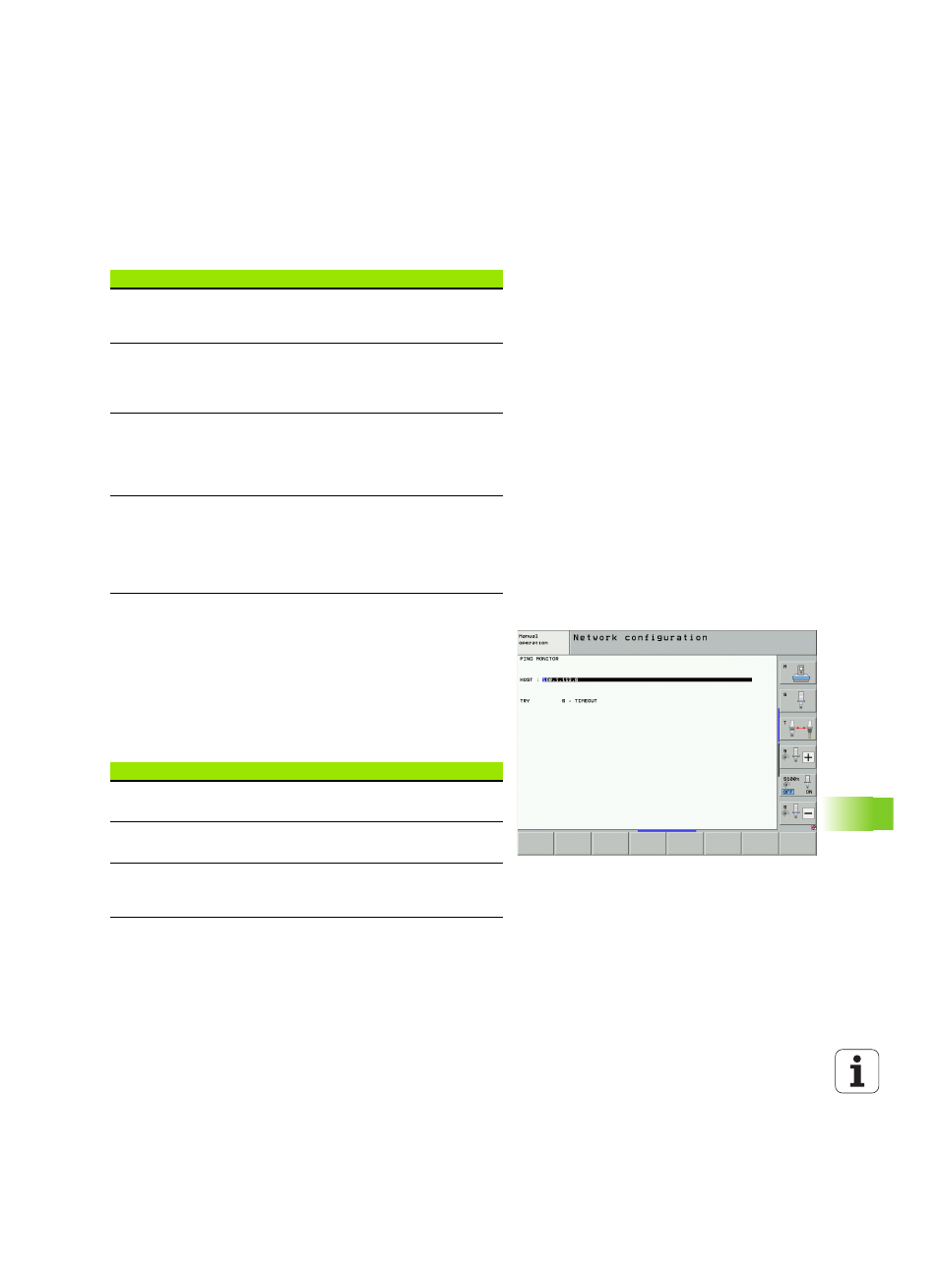6 ether n et int e rf ace – HEIDENHAIN iTNC 530 (34049x-08) ISO programming User Manual
Page 577

HEIDENHAIN iTNC 530
577
1
7.6 Ether
n
et int
e
rf
ace
Defining a network identification
Press the DEFINE UID / GID soft key to enter the network
identification
Testing the network connection
Press the PING soft key
In the HOST line, enter the internet address of the computer for
which you want to check the network connection
Confirm your entry with the ENT key. The TNC transmits data
packets until you exit the test monitor by pressing the END key
In the TRY line the TNC shows the number of data packets that were
transmitted to the previously defined addressee. Behind the number
of transmitted data packets the TNC shows the status:
Setting
Meaning
TNC USER ID
Definition of which user identification the end
user uses to access files in the network. Ask
your network specialist for the proper value
OEM USER ID
Definition of which user identification the
machine tool builder uses to access files in the
network. Ask your network specialist for the
proper value
TNC GROUP ID
Definition of the group identification with
which you access files in the network. Ask
your network specialist for the proper value.
The group identification is the same for end
users and machine manufacturers
UID for mount
Defines the user identification (UID) for the
log-on procedure.
USER
: The user logs on with the USER
identification
ROOT
: The user logs on with the ID of the
ROOT user, value = 0
Status display
Meaning
HOST RESPOND
Data packet was received again, connection is
OK
TIMEOUT
Data packet was not received, check the
connection
CAN NOT ROUTE
Data packet could not be transmitted. Check
the Internet address of the server and of the
router to the TNC
